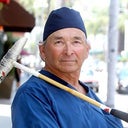The plastic surgeon I am considering for a lower facelift and neck lift indicates he uses a rolling sutures around the ear and behind the tragus. Is this the typical way sutures are done for same surgery, or isn't it? Or are the fine, tiny sutures some doctors do, produce a more invisible suture line? This piece of the surgery is extremely important to me. I need to find out of this is the norm. Thanks
Answers (13)
From board-certified doctors and trusted medical professionals
Dr. Stephen Prendiville, MD

Dr. Stephen Prendiville, MD
Board Certified Facial Plastic Surgeon
Answer
Dr. Farhan Taghizadeh, MD

Dr. Farhan Taghizadeh, MD
Board Certified Facial Plastic Surgeon
Answer
Dr. Larry S. Nichter, MD, MS, FACS

Dr. Larry S. Nichter, MD, MS, FACS
Board Certified Plastic Surgeon
Answer
Dr. Thomas E. Kaniff, MD, FACS

Dr. Thomas E. Kaniff, MD, FACS
Board Certified Facial Plastic Surgeon
Answer
Dr. Vishnu Rumalla, MD

Dr. Vishnu Rumalla, MD
Board Certified Plastic Surgeon
Answer
Dr. Houtan Chaboki, MD

Dr. Houtan Chaboki, MD
Board Certified Facial Plastic Surgeon
Answer
Dr. Siamak Agha, MD, PhD, FACS

Dr. Siamak Agha, MD, PhD, FACS
Board Certified Plastic Surgeon
Answer
Dr. Toby Mayer, MD

Dr. Toby Mayer, MD
Board Certified Facial Plastic Surgeon
Answer
Dr. Samer W. Cabbabe, MD
Dr. Samer W. Cabbabe, MD
Board Certified Plastic Surgeon
Answer
Dr. William Portuese, MD
Dr. William Portuese, MD
Board Certified Facial Plastic Surgeon
Answer
More Lower Facelift Questions
See all Lower Facelift Q&AWE SEND PRETTY
EMAILS
What’s trending? Who’s turning heads? Which TikTok myths need busting? We’ve got you. No fluff, no gatekeeping—just real talk. Get our free, unfiltered newsletter.